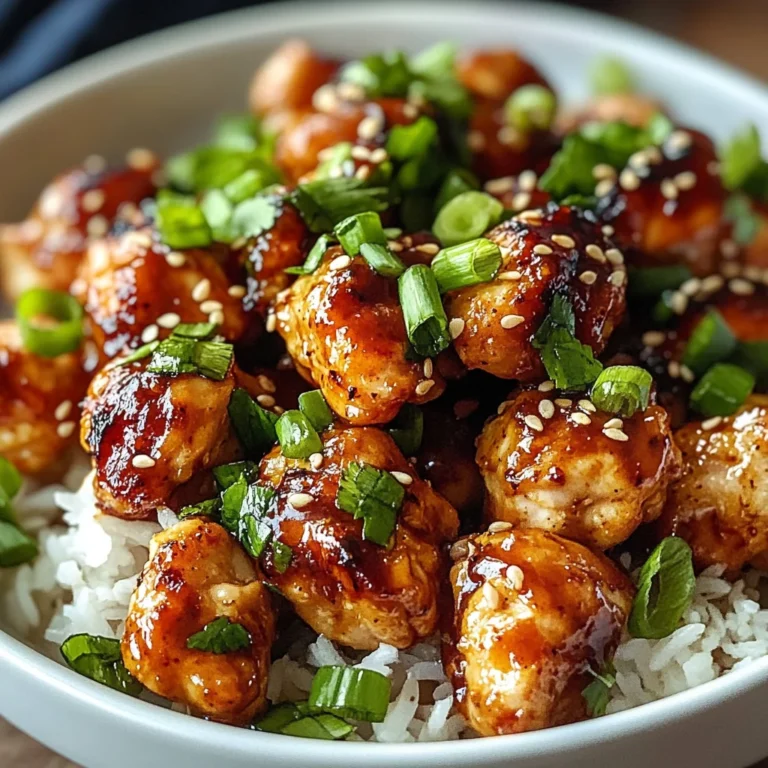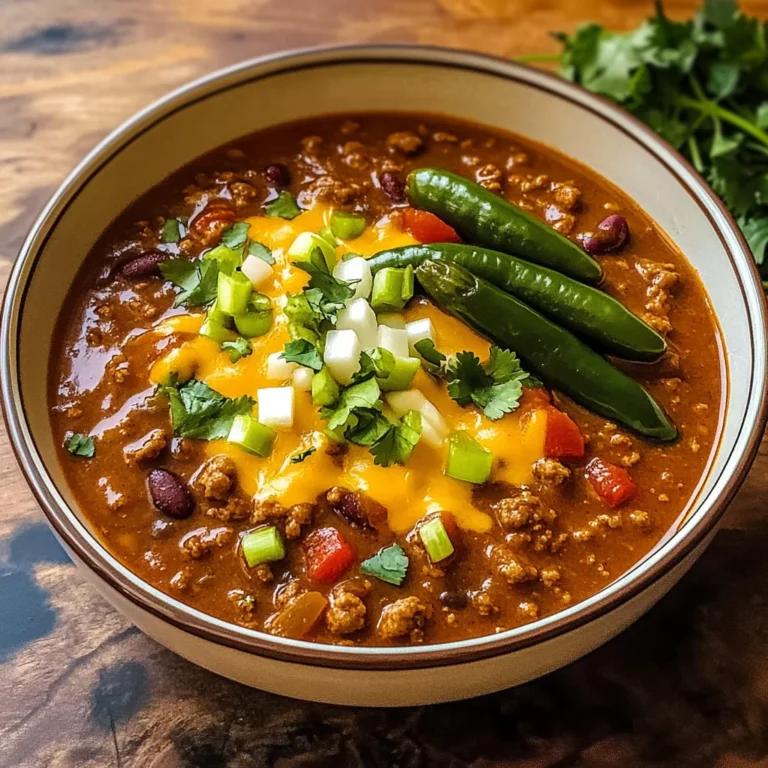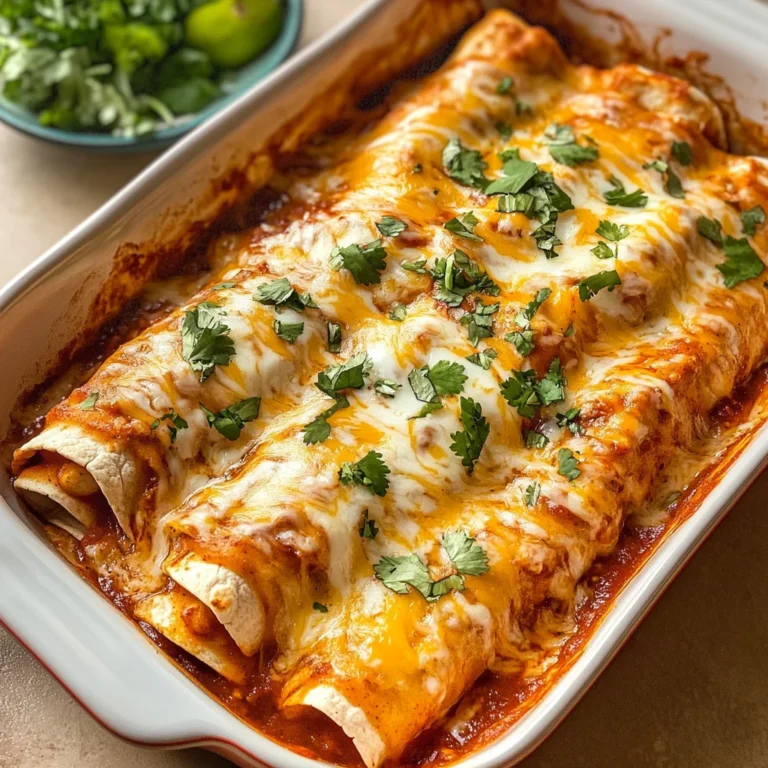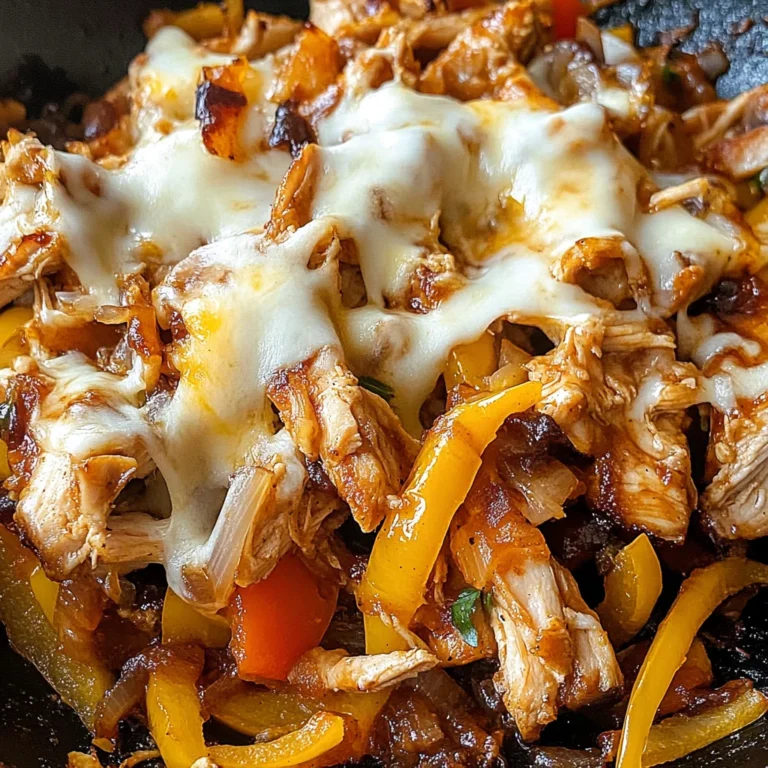Japanese Katsu Bowls: A Delicious Guide to Making Authentic Katsu at Home
Enjoy a delicious homemade Chicken Katsu served with perfectly seasoned rice and a tangy sauce. This crispy, golden-brown dish is a Japanese favorite that’s sure to impress! Japanese Katsu Bowls: A Delicious Guide to Making Authentic Katsu at Home combines rich flavors and satisfying textures, making it perfect for family dinners or special occasions. The crunchy katsu paired with fluffy rice creates a delightful meal that everyone will love.
Why You’ll Love This Recipe
- Easy to Prepare: With simple ingredients and straightforward steps, you can whip up this dish without hassle.
- Flavorful Experience: The combination of crispy chicken, seasoned rice, and tangy sauce delivers an explosion of flavors.
- Versatile Meal: Suitable for lunch or dinner, this recipe can easily be customized with your favorite proteins or vegetables.
- Family-Friendly: Kids and adults alike will enjoy digging into these tasty bowls.
- Impressive Presentation: Serve it up in a colorful bowl, and you’ll wow your guests with both taste and aesthetics.
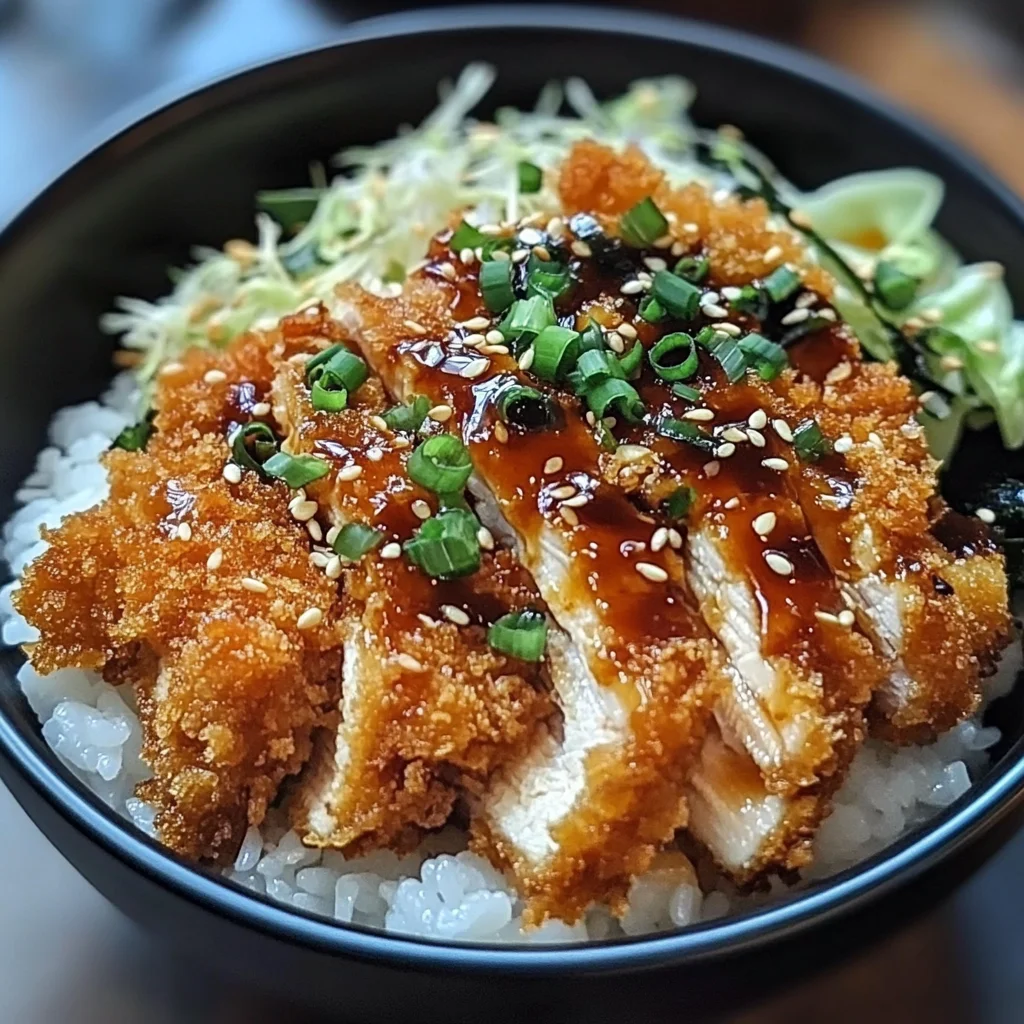
Tools and Preparation
Before starting your delightful journey into making Japanese Katsu Bowls, gather the right tools. Having everything ready will make the cooking process smoother.
Essential Tools and Equipment
- Skillet
- Saucepan
- Mixing bowls
- Meat mallet
- Measuring cups and spoons
- Knife and cutting board
Importance of Each Tool
- Skillet: A good skillet ensures even cooking when frying the chicken, giving it that perfect golden crust.
- Saucepan: This is essential for preparing the rice; proper pot size helps achieve fluffy grains without sticking.
- Meat mallet: Using this tool helps to tenderize the chicken evenly, promoting better cooking results.
Ingredients
To make these delicious Japanese Katsu Bowls, gather the following ingredients:
For the Katsu
- 2 boneless chicken breasts (or beef loin, if preferred)
- Salt and pepper, to taste
- 1 cup all-purpose flour
- 2 large eggs
- 1 cup panko breadcrumbs
- Vegetable oil, for frying
For the Rice
- 2 cups Japanese short-grain rice
- 2 ½ cups water
- 1 tablespoon rice vinegar
- 1 tablespoon sugar
- ½ teaspoon salt
For the Sauce & Garnish
- ¼ cup tonkatsu sauce (or store-bought if you prefer)
- 1 tablespoon soy sauce
- 1 teaspoon Worcestershire sauce
- 1 teaspoon ketchup
- 1 cup shredded cabbage
- 2 green onions, sliced
- Sesame seeds, for garnish
- Pickled ginger (optional)
How to Make Japanese Katsu Bowls: A Delicious Guide to Making Authentic Katsu at Home
Step 1: Rinse the Rice
Rinse the rice under cold water until the water runs clear to remove excess starch. This step is crucial for achieving fluffy rice.
Step 2: Soak the Rice
Transfer the rinsed rice to a saucepan. Add water and soak for 30 minutes. Soaking allows the grains to absorb some moisture before cooking.
Step 3: Cook the Rice
Cover the saucepan and bring it to a boil over medium heat. Once boiling, reduce the heat and simmer for 15 minutes without lifting the lid. This ensures even cooking.
Step 4: Let It Sit
Turn off the heat but leave the pot covered for another 10 minutes. This resting period allows steam to finish cooking the rice.
Step 5: Season the Rice
In a separate bowl, mix rice vinegar, sugar, and salt until dissolved. Gently fold this mixture into your cooked rice for flavor enhancement.
Step 6: Prepare Chicken Breasts
Pound each chicken breast to an even thickness of about ½ inch. Season both sides generously with salt and pepper.
Step 7: Set Up Breading Station
Create a breading station by arranging flour in one shallow dish, beaten eggs in another, and panko breadcrumbs in a third dish.
Step 8: Bread Chicken Pieces
Dredge each piece of chicken in flour first. Then dip it into beaten eggs before coating it thoroughly with panko breadcrumbs.
Step 9: Fry Chicken
Heat vegetable oil in a skillet over medium-high heat. Fry each breaded chicken piece for about 4–5 minutes on each side until golden brown and cooked through.
Step 10: Drain Excess Oil
Once fried, drain on paper towels to remove excess oil. Allow them to rest before slicing into strips.
Step 11: Prepare Sauce
In a bowl, combine tonkatsu sauce, soy sauce, Worcestershire sauce, and ketchup. Mix well until smooth—a perfect accompaniment!
Step 12: Serve Your Katsu Bowl
On a plate, serve a portion of seasoned rice topped with sliced katsu. Add shredded cabbage, sliced green onions, sesame seeds as garnish. Drizzle with sauce and add pickled ginger if desired.
With these simple steps outlined in our guide on making authentic katsu at home, you’re ready to impress your family or guests! Enjoy!
How to Serve Japanese Katsu Bowls: A Delicious Guide to Making Authentic Katsu at Home
Serving Japanese Katsu Bowls is an art that can elevate your dining experience. Here are some creative ways to present this delicious dish that will impress your family and friends.
Traditional Presentation
- Serve the katsu over a bed of fluffy rice, allowing the crispy chicken to rest on top.
- Garnish with shredded cabbage and sliced green onions for a pop of color.
Sauce Drizzle
- Drizzle tonkatsu sauce over the katsu for added flavor.
- Use a squeeze bottle for an elegant presentation.
Accompaniments on the Side
- Place pickled ginger and sesame seeds in small bowls on the side for guests to add as they please.
- This adds a tangy bite and a crunchy texture.
Colorful Garnishes
- Add thin slices of radish or edible flowers around the plate.
- These not only enhance visual appeal but also provide extra crunch.
How to Perfect Japanese Katsu Bowls: A Delicious Guide to Making Authentic Katsu at Home
Perfecting your Japanese Katsu Bowls takes practice, but these tips will help you achieve restaurant-quality results at home.
- Choose the right cut: For tender katsu, use boneless chicken breasts or beef loin.
- Pound evenly: Pound the meat to an even thickness for uniform cooking and crispiness.
- Use panko breadcrumbs: They create a lighter, crispier coating compared to regular breadcrumbs.
- Heat oil properly: Test the oil temperature by dropping in a breadcrumb; it should sizzle immediately.
- Don’t overcrowd the pan: Fry in batches to ensure even cooking and avoid soggy katsu.
- Let it rest before slicing: Resting allows juices to redistribute, keeping your katsu moist.
Best Side Dishes for Japanese Katsu Bowls: A Delicious Guide to Making Authentic Katsu at Home
Complementing your Japanese Katsu Bowl with the right side dishes can enhance your meal. Here are some great options to consider.
-
Miso Soup
A warm bowl of miso soup provides umami flavors that balance out the crispy katsu. -
Edamame
Steamed edamame sprinkled with sea salt offers a healthy and fun finger food option. -
Japanese Pickles (Tsukemono)
These fermented vegetables add tanginess and crunch, making them a perfect palate cleanser. -
Seaweed Salad
A refreshing salad made from wakame seaweed dressed in sesame oil complements the richness of the katsu. -
Cucumber Salad
Lightly salted cucumbers tossed in rice vinegar create a refreshing contrast to the fried dish. -
Gyoza
Pan-fried dumplings filled with meat or vegetables serve as a delightful appetizer alongside your katsu bowl.
Common Mistakes to Avoid
Making Japanese Katsu Bowls at home can be a delightful experience, but there are common pitfalls to be aware of.
- Using the wrong cut of meat: Selecting chicken thighs instead of breasts may result in a greasier dish. Stick to boneless chicken breasts or beef loin for the best texture.
- Not pounding the meat evenly: Uneven thickness can lead to uneven cooking. Always pound your chicken or beef to a consistent thickness of about ½ inch for perfect results.
- Skipping the soaking process for rice: Failing to soak the rice can lead to a gummy texture. Always soak your rice for 30 minutes before cooking for fluffy grains.
- Overcrowding the frying pan: This can cause the temperature of the oil to drop, leading to soggy katsu. Fry in batches if necessary to maintain heat and achieve that crispy coating.
- Neglecting seasoning: Not seasoning your flour, breadcrumbs, and meat can result in bland flavors. Don’t forget to season each layer generously with salt and pepper.
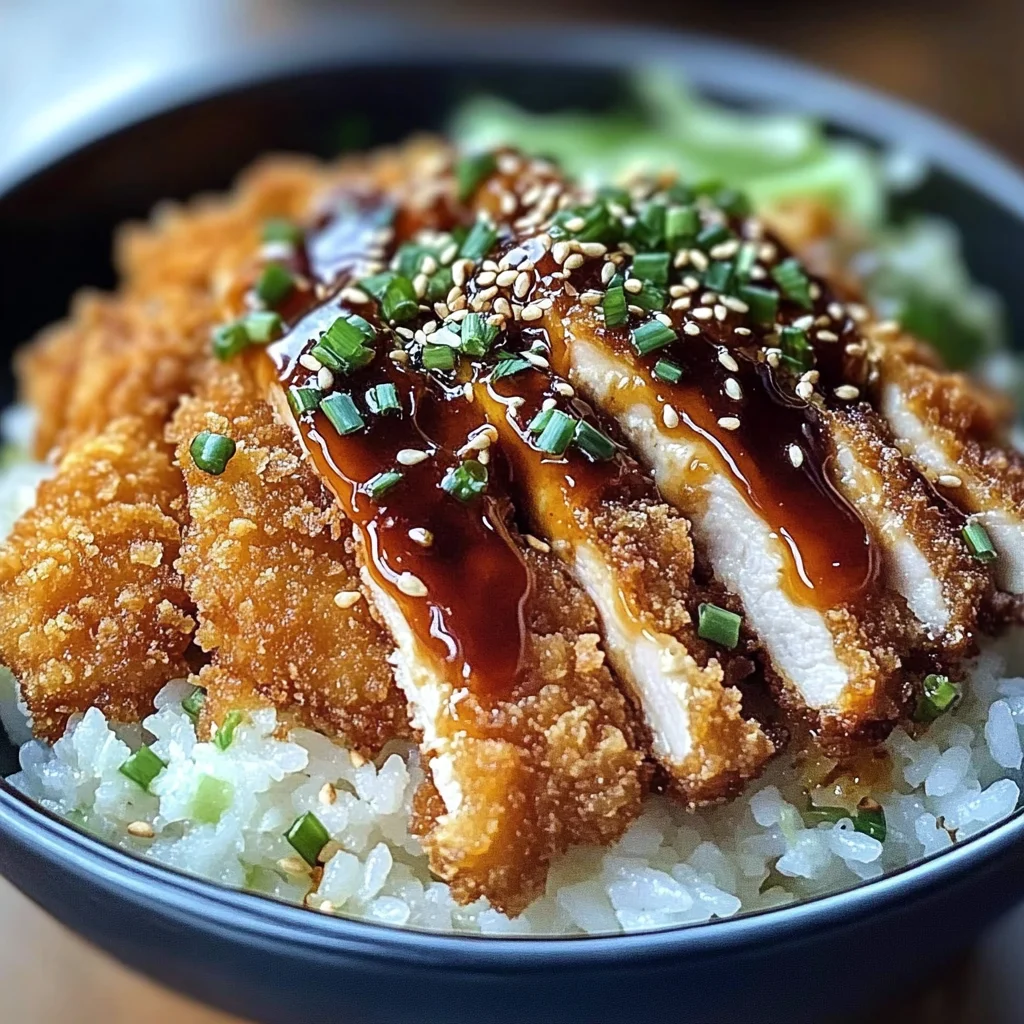
Storage & Reheating Instructions
Refrigerator Storage
- Duration: Store in an airtight container for up to 3 days.
- Tip: Allow katsu to cool completely before storing to prevent moisture buildup.
Freezing Japanese Katsu Bowls: A Delicious Guide to Making Authentic Katsu at Home
- Duration: Freeze for up to 2 months.
- Containers: Use freezer-safe containers or bags, ensuring all air is removed.
Reheating Japanese Katsu Bowls: A Delicious Guide to Making Authentic Katsu at Home
- Oven: Preheat your oven to 350°F (175°C) and reheat katsu on a baking sheet for about 10-15 minutes until heated through.
- Microwave: Heat on medium power for 1-2 minutes, checking frequently. This method may make katsu less crispy.
- Stovetop: Reheat in a skillet over medium heat for about 5 minutes, flipping occasionally to regain crispiness.
Frequently Asked Questions
Here are some common questions about making Japanese Katsu Bowls at home.
What is the secret to crispy katsu?
The secret lies in using panko breadcrumbs and ensuring your oil is hot enough before frying. This helps create that signature crunch!
Can I use other proteins for katsu?
Absolutely! While chicken is popular, you can use pork, beef, or even tofu as alternatives. Each brings a unique flavor profile.
How do I make tonkatsu sauce from scratch?
Mix together soy sauce, Worcestershire sauce, ketchup, and sugar for a simple homemade tonkatsu sauce that enhances flavor beautifully.
Can I customize my Japanese Katsu Bowls?
Yes! Feel free to add different toppings like avocado or pickled vegetables based on your preference. Customization makes it even more enjoyable!
Final Thoughts
Japanese Katsu Bowls are not only delicious but also versatile! This recipe allows you to explore various ingredients and toppings according to your taste. Whether you’re preparing dinner for family or impressing guests, trying out this authentic dish will surely satisfy everyone’s cravings.
Japanese Katsu Bowls
Indulge in the delightful flavors of Japanese Katsu Bowls, a perfect blend of crispy fried chicken and seasoned rice that brings comfort food to new heights. This easy-to-follow recipe showcases the authentic essence of katsu, featuring succulent chicken breasts coated in crunchy panko breadcrumbs and served with fluffy rice, tangy tonkatsu sauce, and fresh garnishes. Whether for family dinners or special occasions, this dish is sure to impress! Create an inviting dining experience with beautiful presentation tips and customizable options. Enjoy a meal that combines rich textures and vibrant flavors, satisfying everyone around the table.
- Prep Time: 30 minutes
- Cook Time: 20 minutes
- Total Time: 50 minutes
- Yield: Serves 4
- Category: Dinner
- Method: Frying
- Cuisine: Japanese
Ingredients
- 2 boneless chicken breasts
- 1 cup all-purpose flour
- 2 large eggs
- 1 cup panko breadcrumbs
- 2 cups Japanese short-grain rice
- ¼ cup tonkatsu sauce
- Vegetable oil for frying
- Salt
- Pepper
- 1 tablespoon rice vinegar
- 1 tablespoon sugar
Instructions
- Rinse and soak rice in water for 30 minutes.
- Cook the rice in a saucepan until fluffy; season with vinegar mixture.
- Pound chicken to even thickness; season with salt and pepper.
- Set up a breading station with flour, eggs, and panko.
- Dredge chicken in flour, dip in eggs, then coat in panko.
- Fry chicken in heated oil until golden brown; drain on paper towels.
- Serve sliced katsu over seasoned rice with tonkatsu sauce and garnishes.
Nutrition
- Serving Size: 1 bowl (450g)
- Calories: 620
- Sugar: 6g
- Sodium: 800mg
- Fat: 28g
- Saturated Fat: 4g
- Unsaturated Fat: 20g
- Trans Fat: 0g
- Carbohydrates: 68g
- Fiber: 3g
- Protein: 34g
- Cholesterol: 130mg



